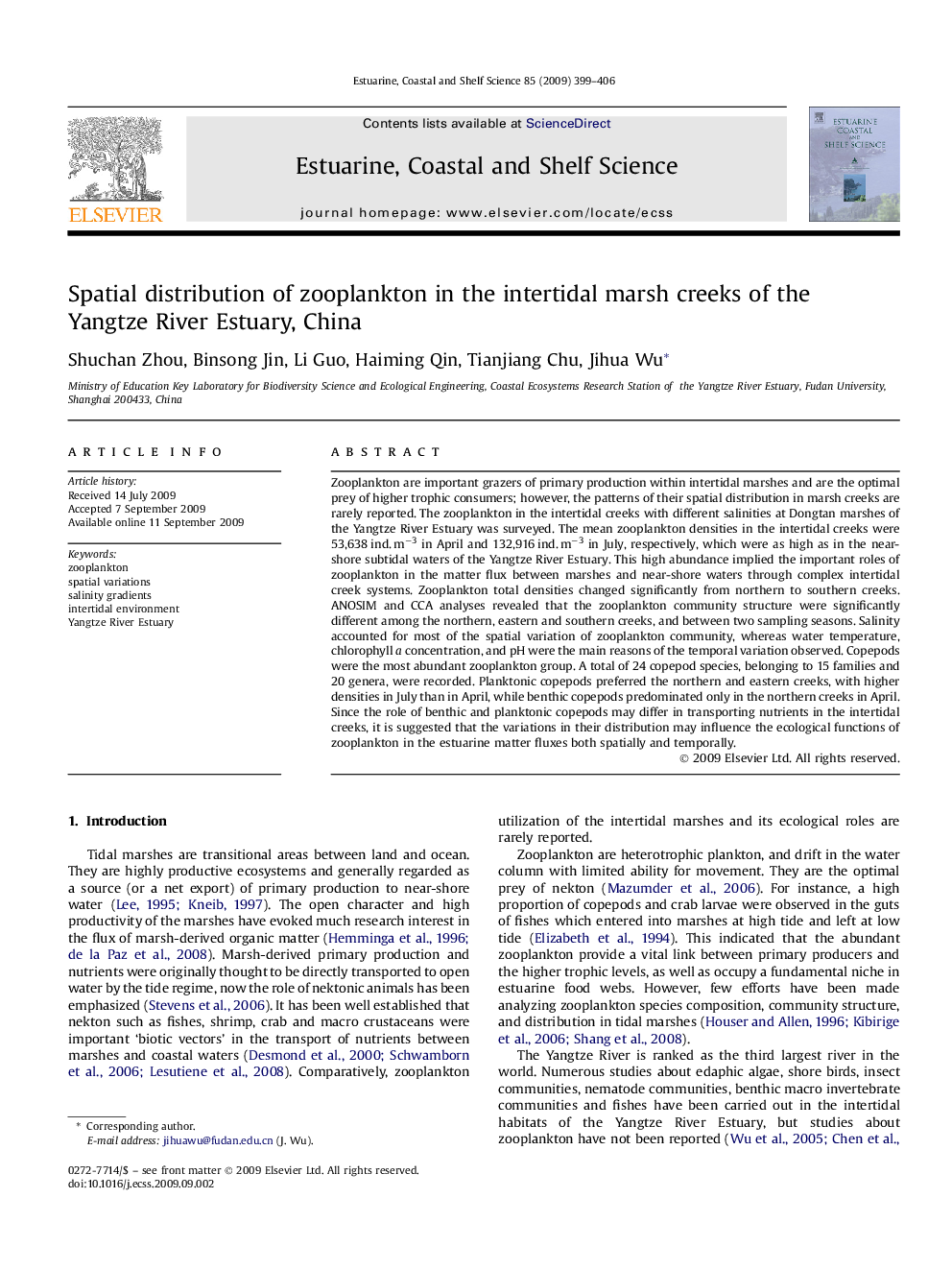| Article ID | Journal | Published Year | Pages | File Type |
|---|---|---|---|---|
| 4540717 | Estuarine, Coastal and Shelf Science | 2009 | 8 Pages |
Zooplankton are important grazers of primary production within intertidal marshes and are the optimal prey of higher trophic consumers; however, the patterns of their spatial distribution in marsh creeks are rarely reported. The zooplankton in the intertidal creeks with different salinities at Dongtan marshes of the Yangtze River Estuary was surveyed. The mean zooplankton densities in the intertidal creeks were 53,638 ind. m−3 in April and 132,916 ind. m−3 in July, respectively, which were as high as in the near-shore subtidal waters of the Yangtze River Estuary. This high abundance implied the important roles of zooplankton in the matter flux between marshes and near-shore waters through complex intertidal creek systems. Zooplankton total densities changed significantly from northern to southern creeks. ANOSIM and CCA analyses revealed that the zooplankton community structure were significantly different among the northern, eastern and southern creeks, and between two sampling seasons. Salinity accounted for most of the spatial variation of zooplankton community, whereas water temperature, chlorophyll a concentration, and pH were the main reasons of the temporal variation observed. Copepods were the most abundant zooplankton group. A total of 24 copepod species, belonging to 15 families and 20 genera, were recorded. Planktonic copepods preferred the northern and eastern creeks, with higher densities in July than in April, while benthic copepods predominated only in the northern creeks in April. Since the role of benthic and planktonic copepods may differ in transporting nutrients in the intertidal creeks, it is suggested that the variations in their distribution may influence the ecological functions of zooplankton in the estuarine matter fluxes both spatially and temporally.
